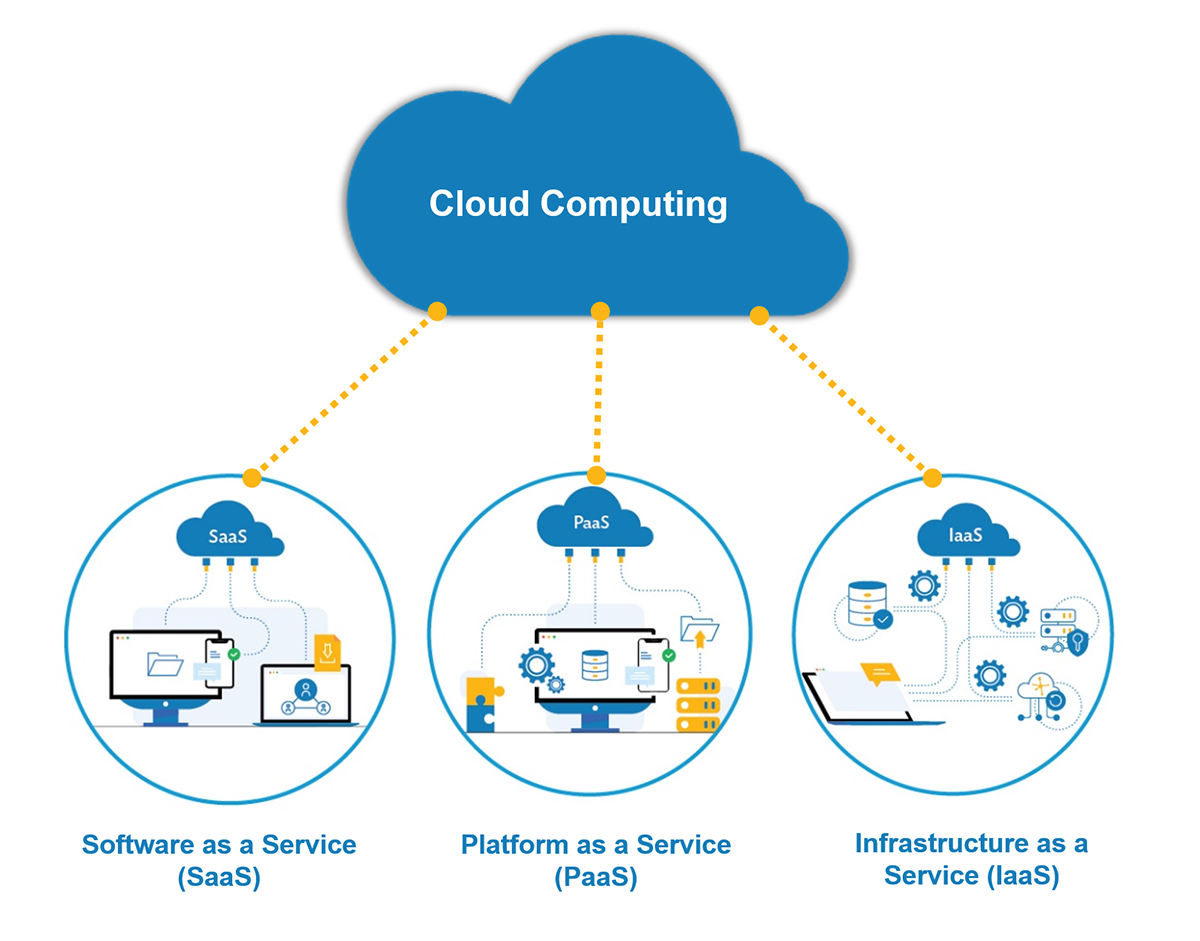Cloud computing
Cloud computing refers to the delivery of computing services over the internet. Instead of running software or storing data on a local computer or server, cloud computing enables users to access and use computing resources remotely via the internet.
In cloud computing, the resources, such as servers, storage, databases, networking, and software applications, are provided as a service by cloud service providers (CSPs). These resources are typically hosted in data centers maintained by the CSPs. Users can access and utilize these resources on-demand, paying only for what they use, similar to a utility billing model.
There are various types of cloud computing services available:
- Infrastructure as a Service (IaaS): Provides virtualized computing resources, such as virtual machines, storage, and networks, on which users can deploy and run their own software applications.
- Platform as a Service (PaaS): Offers a platform for developers to build, deploy, and manage applications without worrying about the underlying infrastructure. PaaS provides tools, frameworks, and runtime environments for application development.
- Software as a Service (SaaS): Delivers complete software applications over the internet, accessible through a web browser or a thin client. Users can use the software without the need for installation or maintenance.
Benefits of cloud computing include:
- Scalability: Cloud resources can be scaled up or down according to the user’s needs, allowing for flexibility and cost optimization.
- Cost-efficiency: Cloud computing eliminates the need for upfront infrastructure investments and provides a pay-as-you-go model, where users only pay for the resources they use.
- Reliability and Availability: Cloud service providers typically have redundant infrastructure and data centers, ensuring high availability and data backup.
- Accessibility and Collaboration: Cloud computing enables users to access their applications and data from anywhere with an internet connection, promoting collaboration among teams.
- Maintenance and Updates: Cloud service providers handle the maintenance, updates, and security of the underlying infrastructure, reducing the burden on users.
However, there are also considerations to keep in mind when adopting cloud computing, such as data security, vendor lock-in, and dependence on internet connectivity.
Overall, cloud computing has revolutionized the way organizations and individuals access, use, and manage computing resources, providing agility, scalability, and cost benefits for various applications and use cases.

